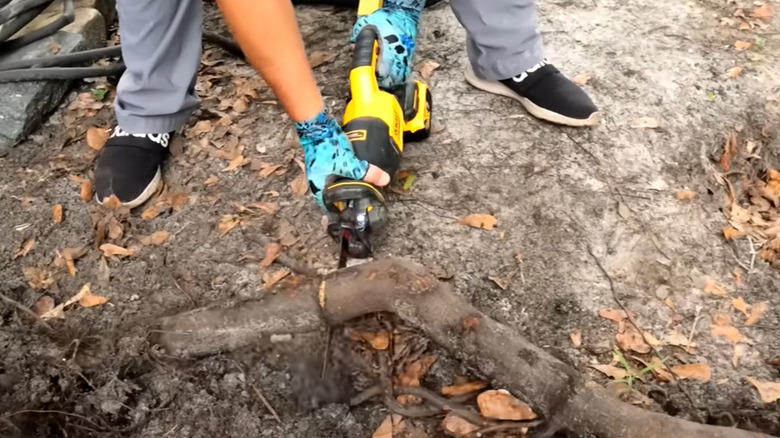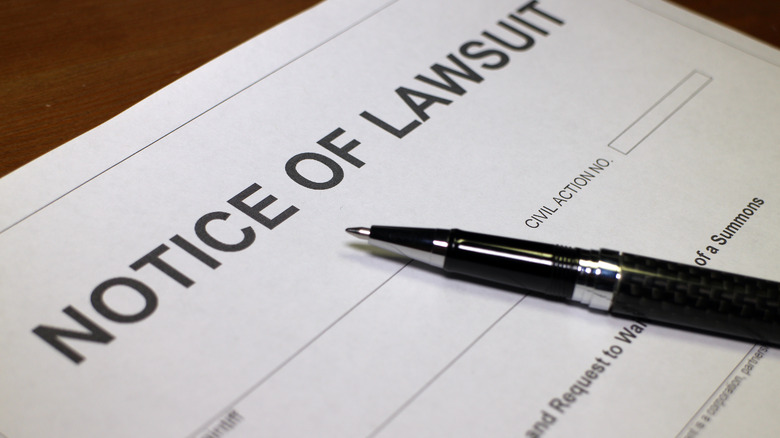What To Do If Your Neighbor's Tree Roots Are Damaging Your Driveway
Living in a neighborhood flush with greenery is a dream for many until the neighbor's majestic trees begin spreading their roots far out, turning it into a nightmare. However, tree roots have no respect for boundaries and will go wherever there's water and nutrients, and if it happens to be your driveway, so be it. Unfortunately, if the homeowners haven't installed root barriers near the property lines—as is common in older constructions—roots can encroach into your drive, causing it to heave and crack. When it does, document the evidence by taking photographs or videos of the damage. Then, hire a certified arborist to make a formal assessment.
Essentially, they must confirm that the roots are the culprits, recommend if it's safe to prune them or if the tree must be removed entirely, and suggest ways (and the corresponding costs) to do so without destabilizing the soil. Armed with the arborist's take, you're all set to bring your concerns to your neighbor's attention, both in writing and in a face-to-face talk. There's no reason to assume an accusatory tone since there is a high chance you've caught them unawares. Simultaneously, familiarize yourself with the local laws and ordinances dealing with tree damage. The same applies if your area is governed by a HOA that might step in to enforce its rules and redress the damage.
You may remove the offending roots
Ideally, holding a friendly conversation or getting a mediator involved should lead to an amicable resolution. There's ample anecdotal evidence where homeowners have split the costs, with the neighbor footing the bill for root pruning and the owner paying for the drive's repairs. But if all complaints fall on deaf ears, you have two options: cut the protruding roots out from your side of the boundary line or file a nuisance lawsuit.
Things do get a little murky here as laws vary by state. Although property owners are within their rights to prune any trespassing branches on their side, in some cases they must send their neighbors a formal notice before taking action. This is to give them sufficient time to resolve the issue. Lacking a response, you can call a tree service company to trim the roots to the property line, ensuring it doesn't permanently damage the tree's vitality and integrity. This is important because, per the California rule, your neighbor can sue you in case their tree dies after you've cut its roots. You might have to pay damages if the court finds you were rash in your action or if there were better alternatives. Alternatively, if your local courts follow the Virginia rule, your rights are limited to instances where the tree is tagged as "noxious" and is proven to be causing "actual harm."
You can possibly file a lawsuit
If you act independently, it may be possible to take your neighbor to a small claims court afterward to recoup your costs if the costs were somewhere between $2,500 and $25,000, generally speaking. However, if the situation requires more than that, or if an arborist suggests removing the tree and the neighbor refuses to comply, you can file a nuisance claim in which you have to prove that the tree is "interfering with the use and enjoyment of your own property," per FindLaw. If the roots have caused real structural damage to your property, you can also file a "serious harm" lawsuit.
If you go that route, you'll likely have to present various experts, including geotechnical engineers, contractors, structural engineers, appraisers, and surveyors, to prove the merits of your case, along with redressal costs. Accordingly, you may be given injunctive relief and monetary compensation. Remember, courts aim for a balancing act wherein they weigh the costs of tree removal against the inconvenience caused and whether the encroachment was deliberate or innocent.



